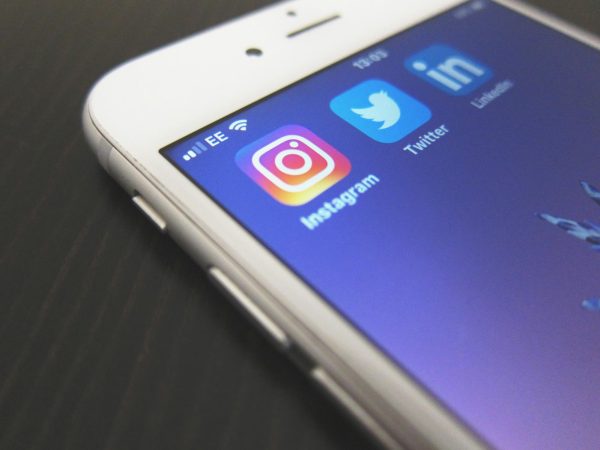Monday, 9 a.m. My friends and I have a free period. Our work is completed, so, to amuse ourselves, we turn to the most promising source of interesting content: Google Chrome. Though there is plenty to be found on our myriad of apps and icons, we have decided to Google each other, observing what comes up. There are lists of articles, receipts of sports and speech tournaments, and endless announcements. Needless to say, in our quest to get into college, we did not cultivate small digital footprints.
At the top of the screen is the culmination of all our hard work, hours upon hours of connecting, formulating, and researching: LinkedIn accounts.
The networking site has become another platform for us to frequently update, exchanging professional handles alongside our less formal accounts on Instagram, Snapchat, TikTok, or whatever else we explore.

With almost 21.7% of LinkedIn users between ages 18 and 24, young adult participation is rapidly growing across all demographics, fields of interest, and experience levels.
Many crucial benefits stem from this access. LinkedIn provides vital access to students, leveling the playing field for teenagers across the U.S. and beyond as they begin to network and search for opportunities. Mentors at major organizations are more approachable than ever — all it takes is a politely worded request. Youth can find jobs, internships, and communities of like-minded individuals in just a click.
Furthermore, it serves as a source of recognition that empowers those of all ages. Rather than rants, curses, or other negative subjects found on most social media, LinkedIn is a congratulatory reprieve whose only options for reactions are “like,” “celebrate,” “support,” “love,” “insightful,” and “funny.” There is no option for jealousy, nor is it a comment deemed acceptable. Only support is meant to grace the layers of LinkedIn.
Additionally, because there is no anonymity, people act with more decorum and “on their best behavior.” There are fewer creepy DMs and predatory behavior when such actions come attached to a name, a job title, and a list of connections to alert.
There are no parental controls, but there is not much need — the entire emphasis is that users are adults who merit trust and full autonomy over their choices, connections, and career endeavors.
However, there is a focus on prestige, with concerns that people will choose what to explore and target their high school experiences solely because of recruiters and admissions officers. Networking becomes important at a much younger age, convincing teenagers to “market themselves” to succeed in the world. In past generations, this extent of networking would, at the earliest, become a factor for most starting in college.
Like all social media, it can also exacerbate insecurities, causing students to perpetually compare themselves to others. These days, high school students feel the need to take on a staggering number of activities to get into college or feel like enough — in many cases, the two are synonymous.
“My biggest stressor is pressure from peers,” said Eva Martinez ’26. “As I hear about what other students are doing, I feel like I am behind.”
Whether engaging in passion projects, stacking up on extracurricular activities, or submitting to any and every contest one can find, teenagers feel the need to be close to perfect in order to to get in anywhere. This is reinforced by parents, media, and the college counseling ads that seem to haunt every type of media, promising guaranteed success in exchange for thousands of dollars. Even LinkedIn, with pages of feeds reflecting college acceptances and internships of peers can leave individuals feeling unprepared and unworthy.
We are learning to write resumes before research papers, preparing for interviews, and constantly looking to update our To-Do lists. To be worthy has meant to be…busy? Committed? Capable? At some point, they all started seeming like synonyms.

Bronx Science students engage in work from tennis coaching to lab work to marketing and analytics. We are navigating what it means to do “enough.” There is heavy discourse as to what that means, whether “2 [activities] inside of school and 1 outside,” “at least 6-7 [roles],” or “finding enough to fill up 90% leisure time without compensating school work,” as Yubin Xie ’25 noted. Regardless, only 20% of those interviewed in a brief intergrade poll of Bronx Science students asserted that they felt satisfied with the amount of work they had done.
“I’m not sure [if I do enough],” admitted Marissa Talushllari ’25. “You would think that having good grades and a few extracurricular activities would be enough, but college admissions are so competitive.”
Aviva Kagan ’26 added, “I do feel overwhelmed because I often feel like I am not doing enough or am not being recognized for the effort that I put into my extracurriculars. There is definitely a lot of competition in our school when it comes to the amount of activities people participate in outside of school. People are quick to compare each other in how much they are doing, which stresses me out since I feel like I am never doing enough.”
So panicked are we about being the best, that we live within comparison. Most college application sites allow students to include 8-10 extracurriculars (ECs) from their time in high school. Each of these is meant to be somehow impactful and personal, taking tens of hours a week of intentional work that no one else has, alongside of course awards, top grades, and more that all eat away at teenagers’ time.
I had 20 ECs: a mix of nonprofit work, writing submissions, social justice advocacy, summer internships — found, in fact, on LinkedIn — boards and advisory panels, and a consulting group, alongside school responsibilities. Needless to say, I did not sleep junior year. Or the following summer, balancing three simultaneous internships at once. While I loved the work I did, moving from one task to another at all times was draining. I was burned out by the job market — and the possibilities of my future — before I even really stepped foot into it. Thinking about next steps meant entrance to this never-ending cycle of work.
In writing supplemental essays for my college applications, I was made to reflect on my many activities and the lessons they taught me. All in all, I had nearly fifty written responses ranging from 100 characters to 400 words, and I still could not include every activity I had done, nor could I include them all in other sections. It finally dawned on me that I really did not need to do so much.
Now, I am a second-semester senior, having reduced my activities and thankfully finished with the application process. I teach younger friends templates for cover letters and define the elusive business casual, attempting to make their forays into the larger world a bit less daunting. I cannot help but wonder if I am encouraging them toward these very same patterns that made me so exhausted.
I am still learning that I cannot do it all — even if it seems like the rest of the world has already moved far beyond me — and that gets to be enough. Success is not a zero-sum game. We can all learn a lesson from LinkedIn’s reaction options: celebrate each other’s accomplishments, glorious as they are, or do not react at all. Together, we are building the future we want to see and slowly breaking down the mold we thought it took to get there.
We are learning to write resumes before research papers, preparing for interviews, and constantly looking to update our To-Do lists. To be worthy has meant to be…busy? Committed? Capable? At some point, they all started seeming like synonyms.

